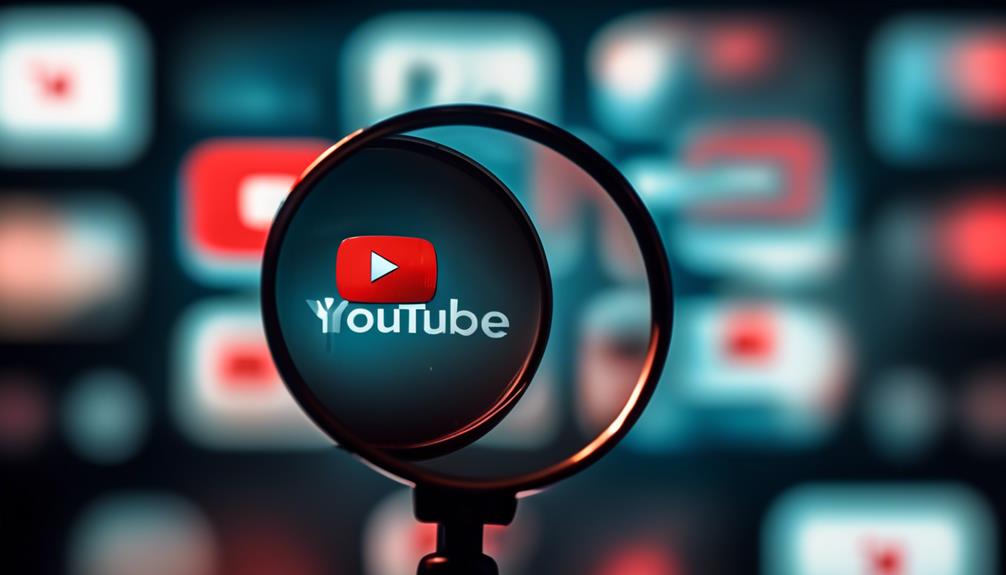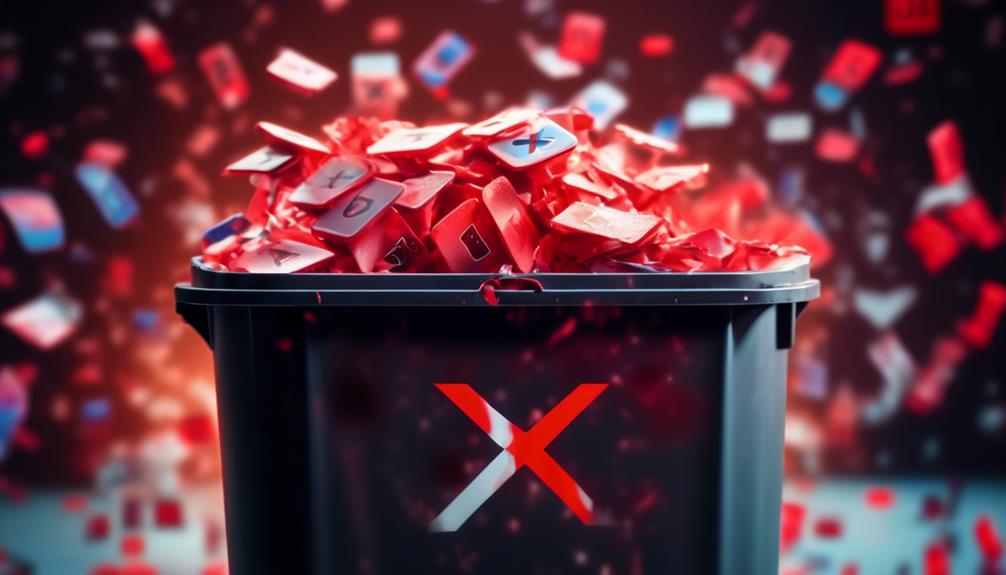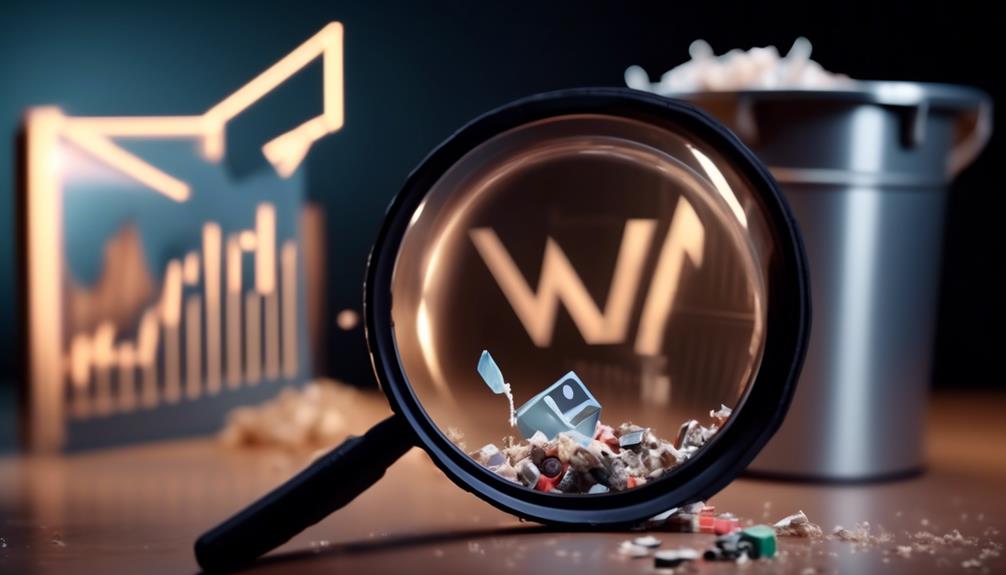
Should I delete YouTube videos with low likes?
Before battling the beast of low-liked videos, you’d better take a moment to consider your course of action. As a content creator, it’s natural to feel disheartened when your videos don’t receive the number of likes you’d hoped for. But should you really delete these seemingly underperforming pieces?
This decision is not as straightforward as it may first appear, and there are indeed a number of factors you need to take into account. We’ll explore these considerations, ensuring you’re armed with the necessary knowledge to make the best decision for your YouTube channel.
Key Takeaways
- YouTube’s algorithm heavily relies on viewer engagement metrics like likes, comments, shares, and watch time to determine video popularity and reach.
- Likes on YouTube play a significant role in promoting content to viewers, enhancing a channel’s visibility, and acting as social proof of content value.
- Low likes on videos can negatively impact their visibility, audience perception of content quality, and potential for attracting new subscribers.
- Keeping low-liked videos can provide opportunities for improvement, experimentation, learning from audience feedback, and attracting niche audiences, contributing to long-term channel growth.
Understanding YouTube’s Algorithm

To strategically boost your YouTube presence, you’ll need to first understand how YouTube’s algorithm functions, as it plays a pivotal role in deciding which videos to recommend and showcase to viewers. This algorithm’s adaptability is key to your strategy. It’s a dynamic beast, continuously learning and adapting based on viewers’ behavior, engagement, and trends. Your content’s consistency plays a pivotal role here.
You’re not just pumping out videos to fill a quota. Each video has to serve a purpose, meet your viewers’ needs, and align with the algorithm’s current preferences. If your videos are inconsistent, the algorithm may struggle to categorize them, affecting your discoverability.
Diving into data can reveal patterns that can guide your content strategy. Look at your most successful videos. What do they’ve in common? What keywords are they using? Use this insight to replicate success and avoid past pitfalls.
Importance of Viewer Engagement
Viewer engagement is a powerful metric that directly influences your YouTube channel’s success, as it not only signals the algorithm of your content’s relevance but also builds a loyal and interactive audience. Engagement metrics like likes, comments, shares, and watch time are critical indicators of how well your content is resonating with your audience.
The more your viewers interact with your content, the more YouTube’s algorithm recognizes its value, thus promoting it to a wider audience. This feedback loop of engagement and promotion drives channel growth and viewer retention. But how does one foster higher engagement?
You should aim to create content that inspires conversation and shares. Ask questions, run polls, and encourage viewers to leave comments. This not only boosts your engagement metrics but also gives you valuable insights into your audience’s preferences.
Don’t just focus on the number of likes. Instead, analyze the data behind viewer behavior. If a video has low likes but high watch time and comments, it might indicate that the content is engaging but polarizing. Rather than deleting such videos, consider them as opportunities to innovate and experiment with your content strategy.
The Role of Likes on YouTube

Likes on YouTube aren’t just a vanity metric; they serve a strategic role in your channel’s success. They’re a critical factor in YouTube’s algorithm, influencing how often your content is suggested to viewers.
Analyzing your like-to-dislike ratio can offer valuable insights into your audience’s preferences, helping you craft content that resonates.
Importance of YouTube Likes
Understanding the significance of likes on YouTube can drastically enhance your channel’s visibility. Likes serve as a major algorithm factor determining the popularity and reach of your videos. YouTube’s algorithm favors content with more likes, promoting them within the platform and boosting your overall rankings.
Like manipulation tactics, although controversial, have been used to artificially inflate these numbers. However, like baiting controversies have shown that this strategy can backfire, damaging your channel’s reputation and credibility.
It’s critical to maintain an authentic engagement strategy, focusing on generating quality content that naturally attracts likes. Remember, likes aren’t just vanity metrics – they’re indicative of audience approval, and can be pivotal in shaping your content strategy.
Impact on Channel Success
Taking into account the crucial role of likes in boosting your YouTube video’s visibility, it’s clear that these thumbs-ups have far-reaching effects on your channel’s success.
Likes contribute significantly to channel branding, acting as social proof of your content’s value and impacting the perception of new viewers. Additionally, likes help YouTube’s algorithm understand your audience demographics, pushing your content to similar users.
A high like count, therefore, might attract more viewers from your target demographic, escalating the growth of your channel. Conversely, videos with low likes may deter potential subscribers and negatively affect your channel’s brand image.
Impact of Low-Liked Videos
Consider the impact of low-liked videos on your channel’s performance.
From an algorithmic perspective, fewer likes may decrease a video’s visibility, affecting your overall reach.
Moreover, a lower number of likes can also impact viewers’ perception of the quality of your content, potentially deterring new subscribers.
Algorithm Influence on Performance
If you’re noticing your YouTube channel’s performance dipping, it’s important to examine the impact of low-liked videos on your overall algorithm ranking. YouTube’s algorithm evolution is constantly adapting to user behavior and content trend analysis. This means low-liked videos can potentially drag your channel’s visibility down.
The algorithm prefers to promote videos with higher engagement, which includes likes, comments, and shares. If your videos aren’t getting the likes they need, that’s a signal to the algorithm that your content mightn’t be resonating with your audience. Consequently, YouTube may recommend your videos less, impacting your reach and views.
Strategically, it might be worth considering whether to keep these low-performing videos or replace them with innovative, engaging content.
Perception of Video Quality
Beyond the algorithm’s response to video likes, your audience’s perception of your channel’s quality can also be influenced by these low-liked videos. Viewers often judge video aesthetics and content originality, forming perceptions about your channel’s overall quality.
Data suggests that low-liked videos can hurt your channel’s reputation, affecting viewer loyalty and engagement. It’s a strategic move to continually analyze your content’s performance, identifying patterns and areas for improvement.
Are your low-liked videos lacking in aesthetic appeal or originality? If so, consider taking innovative steps to enhance these aspects.
Reasons for Low Likes

Several factors can contribute to your YouTube videos garnering fewer likes than anticipated, and it’s crucial to analyze these elements strategically to improve your content’s performance. One of these elements is your audience demographics. Understanding who your viewers are, their interests, and their preferences can significantly influence the reception of your content.
Another element is video duration. Research shows that shorter videos tend to perform better in terms of engagement. However, it’s essential to balance this with providing valuable content to your viewers.
Here are some reasons for low likes:
- Misaligned target audience:
- You’re not reaching your intended viewers.
- Your content doesn’t cater to their preferences.
- Incorrect video duration:
- Your videos are too long or too short.
- They don’t provide enough value or overstay their welcome.
- Poor content strategy:
- Your content doesn’t resonate with your audience.
- It lacks innovation and originality.
Benefits of Keeping Low-Liked Videos
While it’s important to understand the reasons behind low likes on your YouTube videos, there’s also a strategic advantage in keeping these less popular videos live on your channel. This strategy ties in with the concept of content longevity. Even if a video doesn’t perform well initially, it could potentially gain traction over time.
Just because a video has low likes, it doesn’t mean it lacks value. It could be providing essential information to a niche audience, and that engagement is invaluable. By retaining these videos, you’re preserving a comprehensive library of content that could lure in viewers looking for specific information.
Another point to consider is the virality potential. Some videos take time to go viral. It’s not unheard of for a video to suddenly explode in popularity months or even years after it was first uploaded. This is often due to external factors such as changes in trends or increased relevance of the video’s content.
Downsides of Deleting Unpopular Content

While considering the move to delete less-liked videos, you should also weigh the potential downsides.
Erasing content may disrupt your channel’s historical progression and deteriorate trust among your audience, which is often built on transparency.
Moreover, removing these videos may hinder organic growth, as even unpopular content can attract viewers over time.
Impact on Channel’s History
Deleting your less popular YouTube videos might seem like a strategic move, but it can negatively impact your channel’s history and overall growth trajectory. This action can affect two key areas: channel relevance and historical insights.
- Channel relevance:
- Deleting videos can disrupt your channel’s continuity and context, making it challenging for viewers to understand your content evolution.
- It could also affect your channel’s SEO, as YouTube’s algorithm considers the overall channel activity, not just individual videos.
- Historical insights:
- You lose access to analytics of deleted videos, which can provide valuable data on viewer behavior and preference.
- You can’t assess your progress over time without a complete video history.
Therefore, it’s essential to weigh the potential downsides before pressing that delete button.
Deteriorating Audience Trust
Beyond the implications for channel relevance and historical insights, there’s another crucial aspect to consider: the potential erosion of audience trust when unpopular content disappears. This trust breakdown can lead to audience alienation, affecting your channel’s growth and engagement rates.
It’s not just about likes or views, it’s about the consistency of your content. Your audience needs to see your growth and evolution; erasing your past videos might create suspicion or even resentment.
A strategic, data-driven approach suggests that maintaining transparency with your audience fosters loyalty and engagement, even when some videos don’t perform as expected. Therefore, before deleting unpopular content, weigh the potential damage to audience trust against the perceived benefits.
Hindering Organic Growth
Consider this: erasing videos with low likes can also hinder your channel’s organic growth, a key factor in YouTube success.
- Content Diversification: By deleting these videos, you’re reducing the diversity of your content pool. This diversity is essential as it:
- Attracts a wider audience to your channel.
- Provides a platform for experimentation, leading to innovation and growth.
- Audience Retention: Retaining an audience isn’t solely about high-liked videos. It’s about:
- Creating connections with viewers through various types of content.
- Understanding their preferences, even from low-liked videos.
- Organic Growth: Deleting may seem strategic, but you’re actually:
- Eliminating potential insights from those videos.
- Slowing down your growth process by limiting your learning opportunities.
Alternatives to Deleting Videos

While it’s tempting to remove underperforming content, there are strategic alternatives to deleting YouTube videos with low likes that can potentially enhance your channel’s performance. One such alternative is content repurposing. Transforming your least popular videos into new formats like podcasts, blog posts, or social media snippets can give them a fresh lease of life and reach a wider audience.
Another alternative is to delve deep into your video analytics. This can give you valuable insights into why some videos are underperforming. You may find that low engagement is due to factors like poor SEO, incorrect video tagging, or unappealing thumbnails. Once you’ve identified these issues, you can optimize your existing videos to improve their visibility and engagement.
Instead of deleting, consider re-editing your videos. Trim down lengthy videos, improve your audio quality, or add engaging visuals to make them more appealing.
Case Study: Successful YouTubers’ Approach
Let’s take a closer look at how successful YouTubers approach underperforming videos, using data-driven strategies that you can learn from and potentially apply to your own channel. Influencer perspectives and cross-platform comparisons reveal a more nuanced approach than simply deleting videos with low likes or views.
Here’s what they do, broken down into three key strategies:
- Analyze and Learn
- They use YouTube analytics to identify what didn’t work and learn from it.
- They analyze viewer drop-off rates and feedback to improve future content.
- Repurpose and Reuse
- They may repurpose underperforming content for other platforms, conducting a cross-platform comparison to determine the best fit.
- They can also edit and re-upload the video with improved optimization.
- Engage and Encourage Interaction
- They engage viewers with calls to action to boost likes and comments.
- They encourage viewers to share videos, expanding their reach.
Strategies to Boost Video Engagement

To significantly boost your video engagement, you need to adopt proven, data-driven strategies that resonate with your audience’s preferences and viewing habits. Remember that engagement is more than just views. It’s about fostering a connection that makes viewers want to interact with your content.
Consider thumbnail optimization, an often overlooked but crucial aspect of video engagement. A compelling thumbnail can catch a viewer’s eye and entice them to click on your video. Experiment with different designs and analyze which ones drive the most engagement.
Another strategy is audience targeting. Be sure to tailor your content to your audience’s interests, needs, and viewing habits to keep them coming back for more. Utilize YouTube’s analytics tools to gain insights into your audience and refine your targeting strategy.
Consider the following table for additional strategies:
| Strategy | Why it Works | Example |
|---|---|---|
| Interactive Elements | Engage viewers and encourage participation | Polls, quizzes, Q&A sessions |
| Collaborations | Expand reach and bring in new perspectives | Partner with influencers, other YouTubers |
| Consistency | Keeps your channel fresh and viewers coming back | Regular posting schedule, consistent themes |
Making an Informed Decision
After employing these engagement-boosting strategies, it’s important to make data-informed decisions on content curation, such as whether to remove videos with low likes from your channel. Audience targeting and content diversification are critical to the success of your YouTube channel, and they should guide your decision-making process.
Follow these steps to make an informed decision:
- Analyze your channel’s data:
- Look at your video analytics. This includes likes, views, shares, comments, and watch time.
- Identify patterns. Are certain types of videos getting fewer likes? If so, you may need to consider diversifying your content.
- Understand your audience:
- Who’s your target audience? What kind of content do they appreciate?
- Use YouTube’s demographic data to better understand your audience.
- Consider the impact on your brand:
- Will removing videos with low likes affect your brand’s image?
- Remember, consistency is key for brand building.

